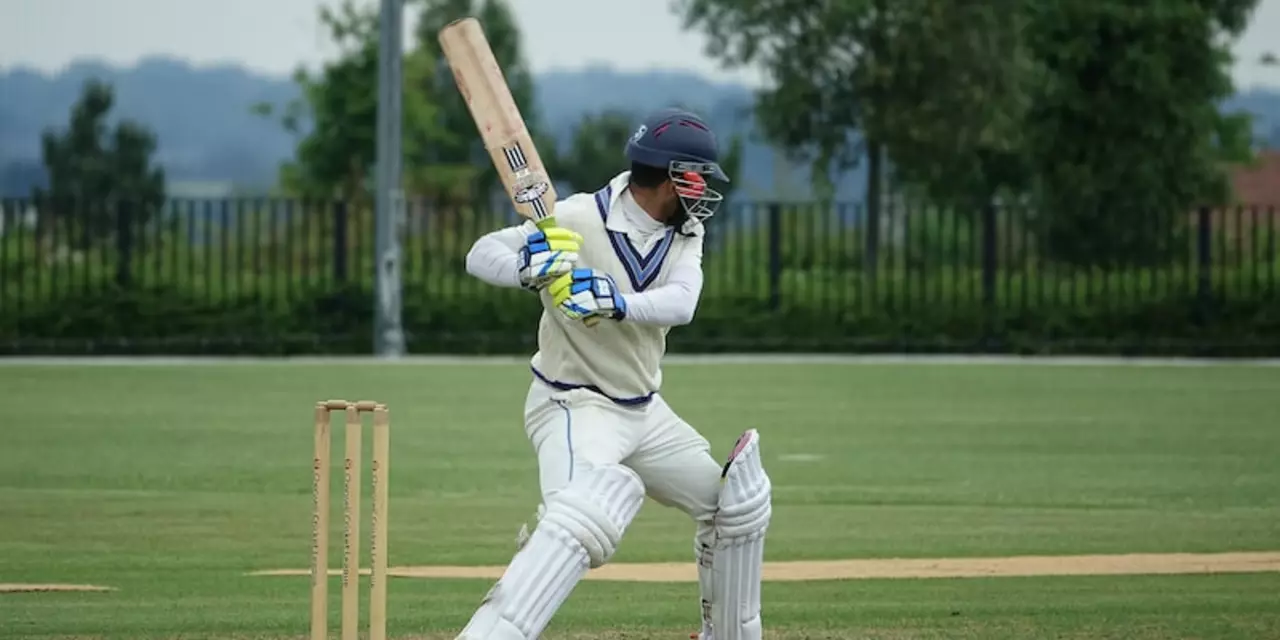Cricket Instruction – Simple Guides for New Fans
If you’ve ever tried to tell an American why cricket is awesome, you know the conversation can get tangled fast. That’s why we put together plain‑spoken, no‑jargon guides that cut through the confusion. In this section you’ll get quick, practical advice on everything from the basic rules to the best way to describe the sport to someone who’s never seen a pitch. Ready to make cricket click for anyone?
Explain Cricket in Easy Steps
Start with the core idea: two teams, 11 players each, try to score more runs than the other side. Compare it to baseball – the batter hits a ball and runs between safe zones, but instead of four bases you have two ends of a 22‑yard pitch. Tell your US friend that the bowler (the pitcher) delivers the ball overhand from one end, aiming to hit the wickets (three small sticks) behind the batsman's legs.
Next, break down the equipment. A bat is flat and made of wood, wider than a baseball bat. The ball is hard, about the size of a tennis ball, and covered in leather. The wickets are three stumps topped by two small bails – think of them as a tiny gate the bowler wants to knock down.
Now cover the formats. Test cricket lasts up to five days – not for the faint‑hearted, but it shows the sport’s depth. One‑Day Internationals (ODIs) give each side 50 overs, similar to a single baseball game. Twenty‑20 (T20) is the sprint version, 20 overs per side, perfect for a fast‑paced night out. Mention that an “over” is six legal deliveries, and a bowler can’t bowl more than four overs in a T20.
Practical Tips for Teaching the Game
Use analogies they already know. Explain a run as a “run” in baseball – the batsmen swap ends after each hit, scoring a point each time they cross. When a wicket falls, it’s like a strikeout – the batting side loses a player. Show a short video of a simple over and pause to point out the key actions: the bowler’s run‑up, the delivery stride, the batsman’s stance, the fielders’ positions.
Hands‑on practice works best. Set up a backyard pitch with a piece of rubber or a cheap plastic bat, and use a tennis ball to avoid injuries. Let them bowl a few overs, then switch roles. Seeing the ball travel and hearing the bat’s “pop” makes the abstract rules concrete.
Finally, keep the conversation light. Ask them what sport they love and draw parallels – a fast bowler’s run‑up is like a pitcher’s wind‑up, a bat’s swing feels like a cricket bat’s “scoop” when they’re used to a hockey stick. By the time you finish, they should be able to say, “Cricket’s a game where you hit, run, and try to knock down tiny sticks.” That’s enough to spark curiosity and maybe even a future fan.
Our Sports Instruction hub will keep adding more quick guides, from fielding drills to understanding the Duckworth‑Lewis method. Bookmark this page, come back for fresh tips, and share what you learn with friends. The more you talk about cricket, the easier it gets for everyone to get on board.
How to explain how to play cricket for someone from the US?
Cricket is a popular sport in many countries around the world, but it is unfamiliar to most people in the United States. This article provides a step-by-step guide on how to explain the game of cricket to someone from the US. It explains the basic rules and regulations of the game, the positions and roles of the players, and the equipment used. It also provides a brief overview of the different formats of the game and the most popular international tournaments. With this guide, you should have all the information you need to explain cricket to someone from the US.
Details +